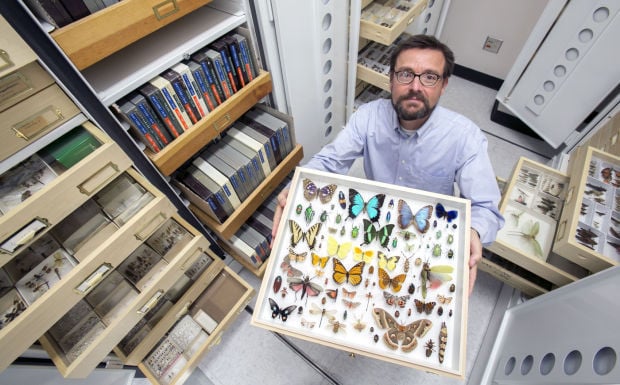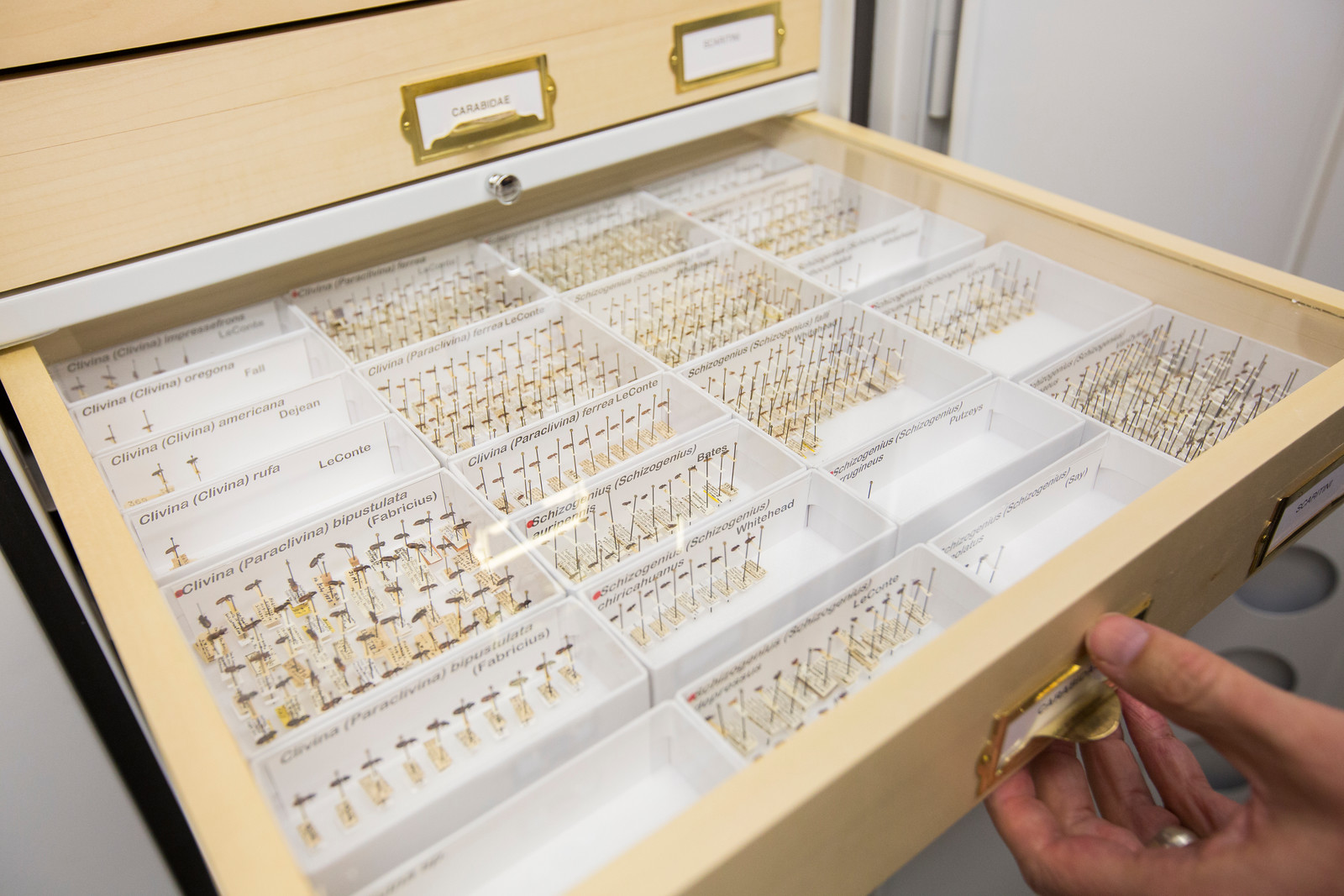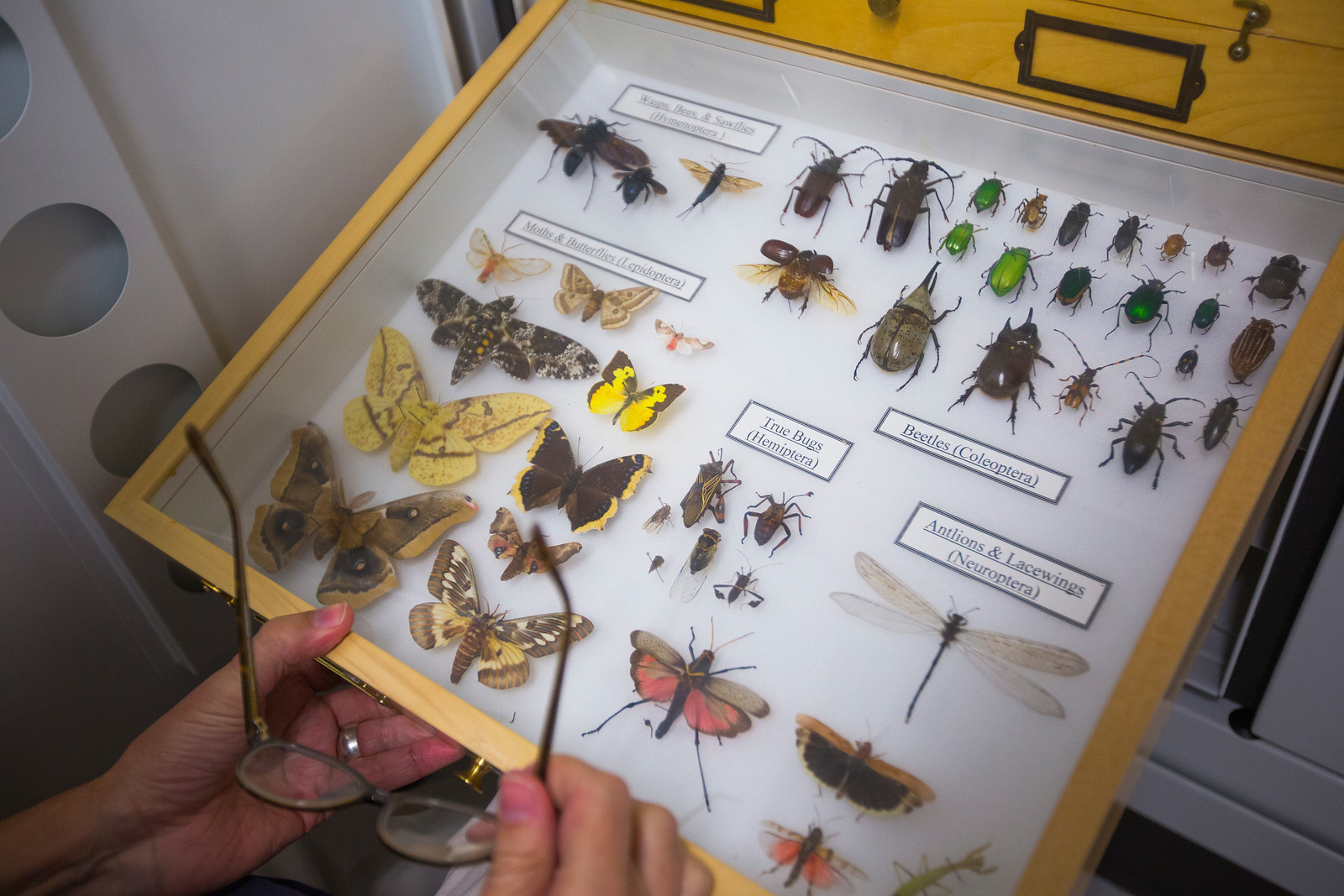To identify a particular insect, please use the information below and then contact:

Gene Hall
Collections Manager, UA Insect Collection
wehall@email.arizona.edu
520-621-6446
Instructions for Preparing Insect Specimens for Identification:

When collecting samples, obtain multiples of the specimens in question. For most arthropods, such as roaches, termites, true bugs, flies, wasps, ants, or spiders, it is safe to put them in 70% alcohol (or rubbing alcohol). This is especially important for immature or soft bodies insects. Examples of this are maggots, juvenile stinkbugs, and termites. Containers should be the smallest reasonable to house the sample, preferably in a plastic container like a pill bottle. Make sure the cap is tight. If you suspect there may be fluid leakage, place this container into a plastic bag before boxing for shipment. In the case of mites, scales, aphids, and thrips, take a cutting of the damaged plant material of concern with the pest still present and put the whole thing in a plastic bag. Send caterpillars in while alive with some of the host plant in a plastic bag. If this cannot be done, put the caterpillar in alcohol like other samples. Grubs should be sent in alive in a pint or two of the affected soil enclosed in a plastic bag. If this cannot be done, put the grub in alcohol like other samples. If you are unsure which of the above directions to use, then place the specimen in alcohol. Label specimens (especially if you multiple locations/sites that are affected) with your name, the date collected, and any locality information you can provide (such as what plant, a residence, the city, etc.) Please provide a completed sample submission ID form with each sample, including your contact information. You will be contacted if any critical information is missing from the form. Samples submitted with insufficient contact information will be disregarded. Ship items as soon as possible. Prompt sample submission is essential to the success of both ID and management recommendations. Drying out or rotting of specimens will make identification difficult, sometimes impossible. Even in alcohol, bacteria blacken many types of insects, especially maggots, grubs, and caterpillars. If you cannot submit a sample immediately, it may be best to blanch suspect arthropods before packaging. The simplest way to do this is to microwave a portion of water until boiling. Remove the water from the microwave, and then drop the specimens into the water and let sit until they float. This kills bacteria that may discolor sitting specimens.
Instructions for Emailing Digital Photos of Insects:

Digital photography has increasingly become an acceptable means of identification with improvements in resolution and magnification. Pictures must be clear and focused. Blurry pictures cannot be used for confident identification. Pictures must be as close (or zoomed) as possible. Pixel counts are apportioned relative to whole image size. The more of the subject in the image, the more pixels used to create it and thus higher resolution. If the image has to be zoomed after importing to a computer, it will be pixelated and unreliable for identification. Pictures must be taken diagnostically, not artistically. Because a photo is taken from a fixed angle, only certain features of the subject may be viewed. Multiple photos taken from different angles are often needed to show key diagnostic features needed for correct identification. Front, back, top, bottom, and sides are important angles. Antennae, abdomen, tarsi, hind wings (for butterflies, moths, and wasps) and the underside often have features that are important for correct ID.


